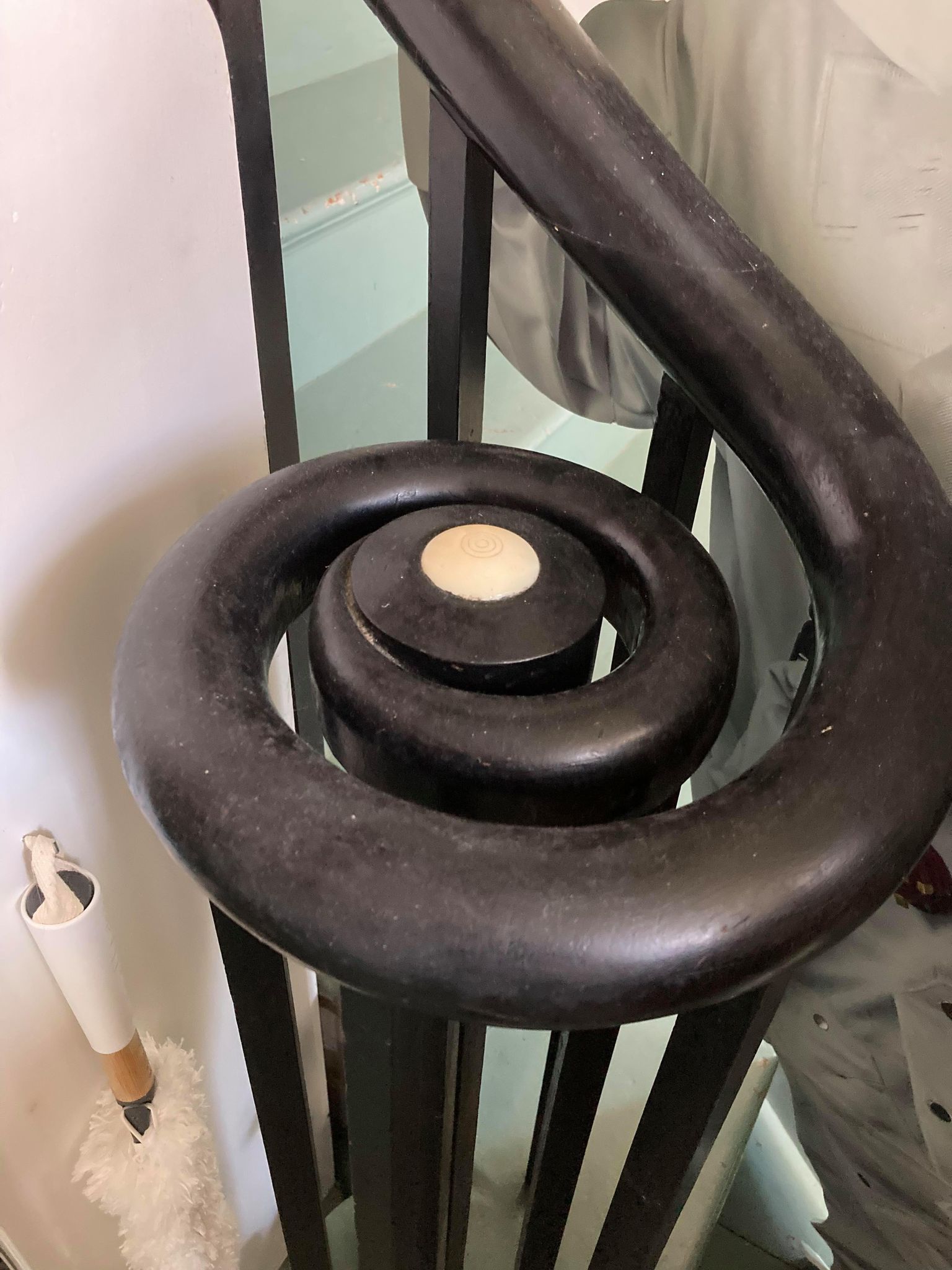The Answer to “Where Is This?”
The image I posted last week and here again is the newel post at the bottom of the front hall staircase in Hinchman House, the MMA’s Natural Science Museum. The small white piece you see on top is what is often referred to as a “mortgage button.” And here is where we have some issues.
Let’s start with the newel post. As time went on, the posts became more elaborate as they became a part of increasingly elaborate staircases in some homes. In some, the newel post became large enough to support a light and the post would be made hollow in order to hide the gas lines or wiring. When these lights were removed by future owners, a large hollow place was left behind and stories began to abound that people once hid their mortgages or deeds in the hollowed out newel post. Thus, that hollow place did hide something but it was really for hiding the magic behind the lighting. The Hinchman House post, ballustrade, and railing are simple. I believe some of the elements are original, reflecting the Quaker ethics of its original owner, Thomas Coffin. But some parts, the balusters, for example, may be later replacements although they themselves are fairly old and the newel is just simply a small piece of rounded wood mounted to a simple baluster.
And then, there in the photograph you see a bit of whalebone (if indeed that is what it is). These “mortgage buttons” as they are often referred to might only have been a way of hiding the joinery beneath them. However, the legend is that they began on Nantucket in the nineteenth century. In the period and earlier, mortgages were less common, spanned a shorter time period, and usually had a large lump sum payment at the end. So the mortgage button could have come to be a display of status to show what you had accomplished. But, there is no known connection between the button and the mortgage so this is really just conjecture although a very nice story. But I like the story, so I will continue to tell both distinguishing between the two because stories are important too, even if there is only a tiny bit of truth there.
JNLF
Recent Posts





